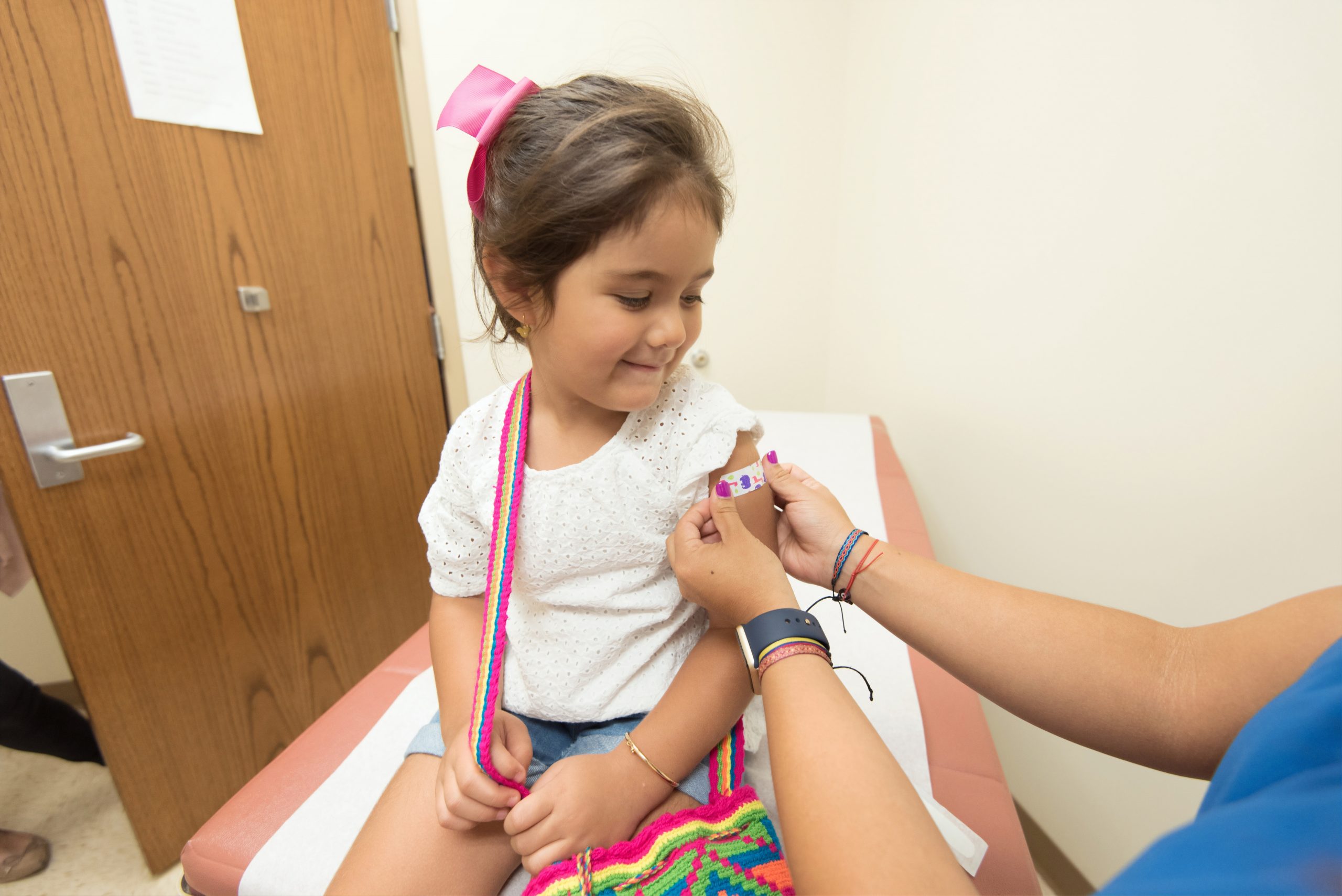One of Canada’s four approved vaccines is prepared to be tested on children across the country.
On Tuesday, Moderna announced the first 6,750 pediatric participants in Canada and the U.S. have been selected in a Phase 2/3 trial called the KidCOVE study in children ages 6 months to less than 12 years.
Moderna says the study is being conducted in collaboration with the National Institute of Allergy and Infectious Diseases (NIAID), part of the National Institutes of Health (NIH), and the Biomedical Advanced Research and Development Authority (BARDA).
“We are pleased to begin this Phase 2/3 study of mRNA-1273 in healthy children in the U.S. and Canada and we thank NIAID and BARDA for their collaboration,” said Stéphane Bancel, Chief Executive Officer of Moderna.
“It is humbling to know that 17.8 million adults in the U.S. have received the Moderna COVID-19 Vaccine to date. We are encouraged by the primary analysis of the Phase 3 COVE study of mRNA-1273 in adults ages 18 and above and this pediatric study will help us assess the potential safety and immunogenicity of our COVID-19 vaccine candidate in this important younger age population.”
As part of the process, Moderna will evaluate the safety, tolerability, reactogenicity, and effectiveness of two doses given 28 days apart.
Moderna says in Part 1 of the study, each participant ages two years to less than 12 years may receive one of two dose levels.
Also in Part 1, each participant ages six months to less than two years may receive one of three dose levels.
Participants will be followed through 12 months after the second vaccination.
Currently, Moderna’s COVID-19 vaccine is authorized for use in individuals 18 years of age and older.
“Vaccine effectiveness will either be understood through achieving a correlate of protection, if established or through immunobridging to the young adult (ages 18-25) population,” said Moderna.
Vaccine deliveries from Moderna are expected to bring 846,000 doses in Canada through the week of March 22.
In Ontario, shipments are expected to grow from just over 160,000 through the week of March 8 to over 320,000 doses expected to arrive in the week of March 22.
With the extended intervals between the first and second doses, the National Advisory Committee on Immunization (NACI) projects 80 percent of Canadians over the age of 16 could receive a first dose of the Pfizer or Moderna shot by the end of June.
The timeline could move up even more once Johnson & Johnson vaccines arrive in Canada.

Toronto Raptors guard Fred VanVleet says he tested positive for COVID-19.
“I wouldn’t wish it on anybody,” VanVleet told reporters after returning to practice for the first time in two weeks Tuesday, according to Sportsnet’s Michael Grange.
VanVleet, Pascal Siakam, Fred VanVleet, Malachi Flynn and Patrick McCaw were cleared to practise in Detroit on Tuesday after being sidelined for health and safety protocols for more than a week. Siakam, McCaw and Flynn were upgraded to “questionable” for Wednesday’s game against the Pistons, while VanVleet is listed as “doubtful.”
Their return would be good news for a Raptors team that has lost five straight to drop to 11th in the Eastern Conference at 17-22.
OG Anunoby remains out for Toronto’s game versus Detroit on Wednesday to COVID-19 health and safety protocols.
Siakam has missed the past six games, while the other five have each missed five in a row.
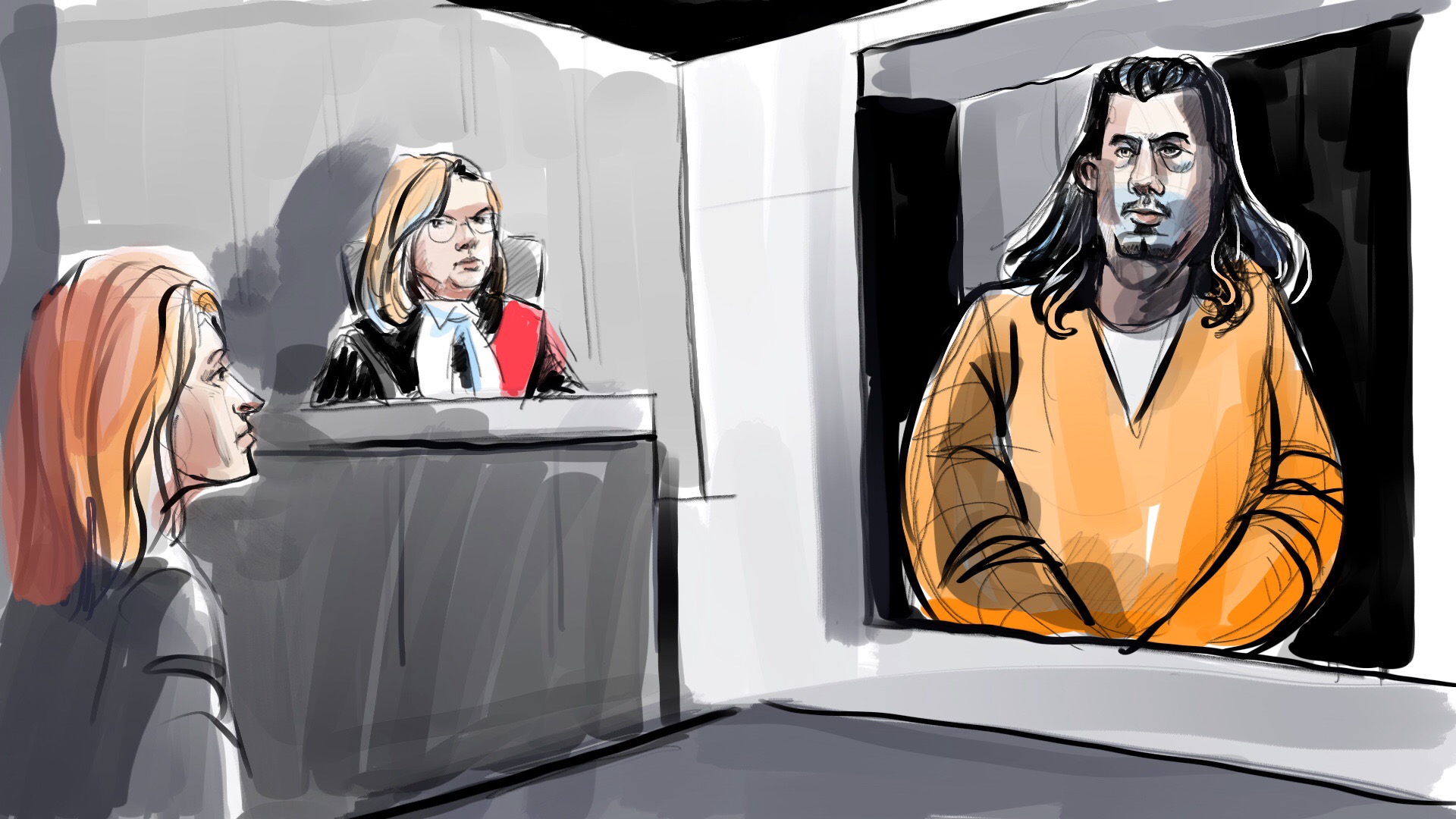
CAUTION: This story contains graphic content that may disturb some readers.
Two young women who vanished nearly a decade apart were killed and dismembered by a Toronto-area man who then disposed of their remains by tossing them in a lake and flushing them down the toilet, an Ontario judge found Tuesday.
WATCH: https://toronto.citynews.ca/2021/03/16/adam-strong-murder-trial-verdict/
Adam Strong, 47, was convicted of first-degree murder in the killing of Rori Hache and of manslaughter in that of Kandis Fitzpatrick, after a judge rejected the suggestion he had cut up their bodies but not caused their deaths.
The two women died in Strong’s apartment in Oshawa, Ont., and their remains were stored in a large freezer in his bedroom as he sought to get rid of them over a period of time, Ontario Superior Court Justice Joseph Di Luca said.
“To be blunt, the chances that Mr. Strong would have twice found himself in need of a chest freezer to store the dismembered body parts of young women who met their deaths innocently is so infinitesimally small that it suggests the opposite conclusion,” he said.
Both Hache and Fitzpatrick struggled with drug addiction and their disappearances sparked significant search efforts by their distraught relatives, Di Luca said, noting both women were deeply loved by their families.
Though there are similarities between them and the circumstances surrounding their deaths, the evidence regarding Fitzpatrick’s death is insufficient to support a murder conviction, which requires proof beyond a reasonable doubt that the accused intended to kill or to cause harm that was likely to kill, the judge said.
“While Miss Hache and Miss Fitzpatrick were similarly situated in terms of their life circumstances, and may well have fallen in with Mr. Strong for the same reasons, the almost 10-year gap in time and the absence of forensic or other evidence relating to what happened to Miss Fitzpatrick at the time of her death renders a singular inference on this issue impossible,” he said.
Hache, who was 18 and pregnant, disappeared in August 2017. Her torso was found in Lake Ontario the following month, and Strong was charged in her death in late December of that year.
Fitzpatrick, meanwhile, was 19 when she was last seen in 2008. Her body was never found, but in July 2018, police alleged they had found her DNA in Strong’s basement, including on a specialty hunting knife used for skinning and gutting animals.
The trial, in front of a judge alone, heard police were called to Strong’s home in December 2017 after plumbers found a “flesh-like” substance in the pipes. Strong admitted to officers at the scene that the substance was “a body,” court heard.
Investigators later found Hache’s blood and DNA in multiple areas, including the wall and ceiling of his bedroom, and on items such as a bondage device and a pet leash, court heard.
In a ruling delivered in court and by teleconference, Di Luca found Strong killed Hache sometime between Sept. 1 and Sept. 3 by repeatedly hitting her in the head with a hammer or a similar object as she lay bound in his bedroom.
The killing constitutes first-degree murder because it occurred in the course of a sexual assault, he said. It’s possible the encounter was initially consensual, potentially involving paid sex work, but that consent would have been negated once Strong hit Hache, he said.
Strong then “meticulously” dismembered Hache’s body and dumped her torso in the lake on Sept. 4, the judge found.
The rest of her body was stored in Strong’s freezer until Christmas Eve, when he cut it up further and disposed of the pieces by flushing them down the toilet, the judge found.
Some body parts were placed back in the freezer afterwards, though Strong planned to get rid of them at a later date, Di Luca said.
“I am satisfied that if Mr. Strong had not been arrested, he would have followed through with his plan, and would eventually have disposed of all of Miss Hache’s body parts,” he said.
Court heard Strong later told investigators who questioned him that he was surprised when Hache’s torso was discovered in the lake because he had taken precautions to keep it from surfacing.
He also blamed his arrest on “faulty plumbing,” and told police flushing remains down the drain was an efficient disposal method, court heard.
Di Luca ruled that Strong’s surprise stemmed from the fact that he had successfully used those techniques in getting rid of Fitzpatrick’s remains.
Court also heard Strong told investigators he regretted getting caught but otherwise had no remorse, and that he tried to negotiate a deal that would secure him a more comfortable imprisonment.
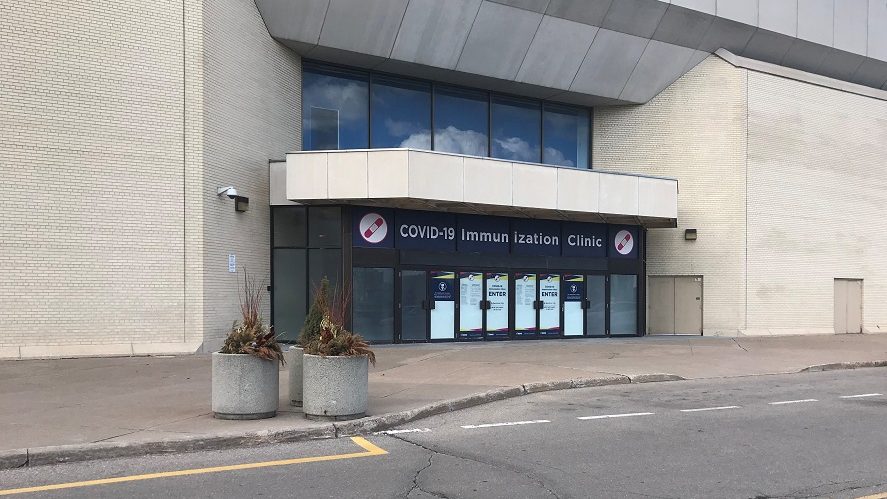
Three mass vaccination centres in Toronto are set to open their doors on Wednesday.
The vaccination clinics have been set up at the Metro Toronto Convention Centre, Scarborough Town Centre and Toronto Congress Centre.
“We want to open up these sites and keep them running until the job is done,” says Mayor John Tory.” And the job here, in this case, is as many needles in as many as arms as possible for all groups across the city — reminding people that right now we’re dealing with people who have made a reservation, made an appointment, and who are 80 years of age or over.”
“As people see that these clinics are open and sign up, that we will make huge progress on getting the population of the City of Toronto vaccinated, so that we can bring this pandemic to an end,” Tory added.
According to city officials, inside the 55,000 square-foot clinic at the Toronto Congress Centre, teams of up to 10 immunizers at a time will work to vaccinate five people per hour per team.
Fire Chief Matthew Pegg, who is leading Toronto’s emergency response, says each of the three clinics are currently scaled at 450 appointments per day.
“Of course, as we move through the weeks and the vaccine capacity increases, there’s a corresponding increase in our throughput in the clinic, the amount of vaccine we’re able to deliver so that we’ll increase proportionately as we move forward,” said Pegg.
More than 1,300 people are expected to roll up their sleeves on the first day.
Tory says, “I would urge everybody to explore at getting vaccinated. If you have any need for any information, we have lots of it available to people so that they’ll be comfortable doing what everybody should do for themselves, and for the sake of their family, their coworkers, their friends, which is to get vaccinated — this is a very important thing to help us wrestle COVID-19 to the ground for once and for all.”
The mass vaccination clinics will run from 11 a.m. to 8 p.m., seven days a week.
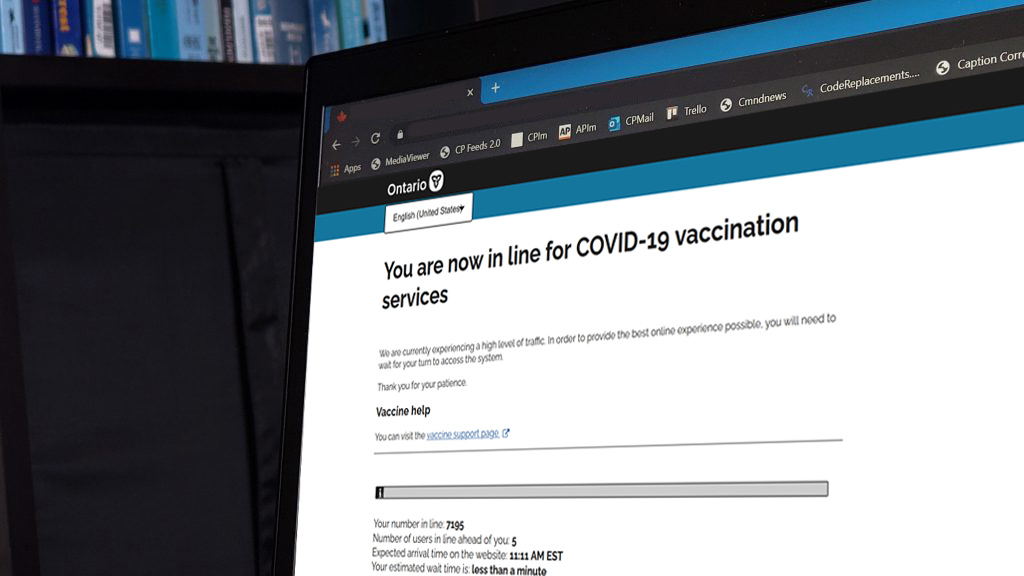
Ontario’s COVID-19 vaccine portal launched Monday with tens of thousands of people aged 80 and older booking their appointments, while the province promised to resolve technical issues many users reported.
WATCH: https://toronto.citynews.ca/2021/03/15/ontario-covid-19-vax-portal-launches-with-tens-of-thousands-of-bookings-some-errors/
The government said more than 63,000 people had booked vaccine appointments by early afternoon.
Premier Doug Ford said any “bumps in the road, or wrinkles in the system” would be taken care of immediately.
“I’m just very grateful that the system never crashed,” he told a news conference. “That’s what I’m shocked about, actually.”
Residents who are eligible to get vaccinated can book online at www.ontario.ca/bookvaccine, while those wishing to schedule by phone can call 1-888-999-6488.
The online booking system and call centre went live at 8 a.m., and the site showed more than 8,000 people in the queue for an appointment a few minutes later, with an estimated wait time of about an hour.
The lineup appeared to grow quickly, with some who went on the site shortly afterwards reporting a longer estimated wait time.
Several health units reported issues with the new system, saying they were working with the province to address the problems.
“Please do not attempt to book an appointment at this time,” the Grey Bruce Health Unit in southern Ontario told local residents just hours after the booking system went live. It said system issues had resulted in booking errors.
The Simcoe-Muskoka Health Unit said some people were encountering error messages that indicated no local appointments were available through the booking site for its region. It said the province had not finished inputting all of its clinics and was hoping to resolve the issue later Monday.
Elsewhere, users reported seeing error messages after filling out the website’s vaccine booking forms.
Eric Weichel logged onto the site at 9 a.m. from his home in North Bay, Ont., in a co-ordinated effort with his mother, who helped from Parry Sound, Ont., and another friend who tried from a cell phone in Guelph, Ont. They were all trying to get an appointment for Weichel’s 85-year-old grandmother, Hazel Wager.
After getting into the queue and filling out basic information like date of birth and postal code, all three kept getting the same message, a blank screen with just the words “form has been tampered with.”
Weichel said his mother then tried the phone number, but gave up after nine attempts to get through. He said he finally was able to book an appointment through the website at 3 p.m., six hours after he started.
His grandmother has her first shot scheduled for next Monday in Parry Sound, Ont., and her second shot appointment in July, he said.
“I’m so excited to hug her after she gets her vaccine,” Weichel said in an interview.
Others who went onto the site shared their successes on social media.
“My in-laws (with the help of their doting son) both got COVID-19 vaccine appointments for next Tuesday at City Hall. I can’t believe how happy and relieved I am,” one Ottawa resident said on Twitter.
A spokesman for the Ministry of Health said the government was aware of the technical issues some users were encountering and urged them to book an appointment using the Provincial Vaccine Information Line instead.
Some of Ontario’s 34 public health units have already established their own systems for booking vaccination appointments, but the provincial portal will either enhance or replace those setups in many areas.
The province reported Monday that a total of 1,191,553 COVID-19 vaccine doses have been given out in Ontario so far.
But even as the vaccination drive ramps up, some regions of the province are still dealing with a troubling number of COVID-19 cases.
Sarnia-Lambton moved into the “grey lockdown” stage of the province’s colour-coded pandemic response framework on Monday following a spike in local infections.
Sarnia Mayor Mike Bradley wrote to Ford Monday, asking that in future, any region moved into lockdown by the province should be given priority access to COVID-19 vaccines.
“It is a simple step your government can take immediately that would alleviate and diminish the distress as we enter the “Grey Lockdown Zone” and give people here optimism and hope for the future,” Bradley said.
Meanwhile, Ford confirmed Monday that the head of Ontario’s vaccine task force will be leaving the job in a few weeks.
Retired general Rick Hillier’s contract expires on March 31, at which point he will leave the role.
The province has faced criticism about the slow rollout of the COVID-19 immunization process but Ford has said the vaccine effort depends on supplies provided by the federal government.
Ontario reported 1,268 new cases of COVID-19 on Monday and nine more deaths linked to the virus.
With files from Liam Casey

David Fincher’s Mank led nominations to the 93rd Academy Awards with 10 nods Monday, and for the first time, two women — Chloe Zhao and Emerald Fennell — were nominated for best director.
Eight films were nominated for best picture. Mank was joined by Fennell’s Promising Young Woman, Zhao’s Nomadland, Judas and the Black Messiah, Sound of Metal, Minari, The Father and The Trial of the Chicago 7.
History was made in the best director category. Only five women have ever been nominated in the category before. Zhao is the first woman of Asian descent nominated. The other nominees were Lee Isaac Chung for Minari, David Fincher for Mank and Thomas Vinterberg for Another Round.
Among performers, it’s the most diverse slate of nominees ever — and a far cry from the all-white acting nominees that spawned the #OscarsSoWhite hashtag five years ago. Nine of the 20 acting nominees are people of colour, including a posthumous best-actor nomination for Chadwick Boseman, and nods for Riz Ahmed (Sound of Metal), Steven Yeun (Minari), Daniel Kaluuya and Lakeith Stanfield (Judas and the Black Messiah), Leslie Odom Jr. (One Night in Miami), Viola Davis (Ma Rainey’s Black Bottom), Andra Day (The People vs. Billie Holiday) and Yuh-Jung Youn (Minari).
Davis, who won for her performance in 2016’s Fences, landed her fourth Oscar nomination, making Davis the most nominated Black actress ever.
The other nominees for best actress are: Carey Mulligan, Promising Young Woman; Frances McDormand, Nomadland; Vanessa Kirby, Pieces of a Woman.
The nominations were announced from London by presenters Nick Jonas and Priyanka Chopra Jonas. The Academy Awards would typically have happened by now but this year were postponed by two months due to the pandemic. They will instead be telecast April 25.
The film academy confirmed Monday that the show will be held at both its usual home in the Dolby Theatre in Los Angeles and the city’s railway hub, Union Station.
In addition to Boseman, Ahmed and Yeun, the nominees for best actor are: Anthony Hopkins, The Father; Gary Oldman, Mank.
The nominees for best supporting actress are: Maria Bakalova, Borat Subsequent Moviefilm; Glenn Close, Hillbilly Elegy; Olivia Colman, The Father; Amanda Seyfried, Mank; Yuh-Jung Youn, Minari.
The nominees for best supporting actor are: Sacha Baron Cohen, The Trial of the Chicago 7; Leslie Odom Jr., One Night in Miami; Daniel Kaluuya, Judas and the Black Messiah; Paul Raci, Sound of Metal; LaKeith Stanfield, Judas and the Black Messiah.
The nominees for best documentary feature are: Collective; Crip Camp: A Disability Revolution; The Mole Agent; My Octopus Teacher; Time.
The nominees for best international film are: Quo Vadis, Aida?, Bosnia and Herzegovina; Another Round, Denmark; Better Days, Hong Kong; Collective, Romania; The Man Who Sold His Skin, Tunisia.
The nominees for best original song are: Husavik from Eurovision Song Contest: The Story of Fire Saga; Fight for You from Judas and the Black Messiah; Io S? (Seen) from The Life Ahead (La Vita Davanti a Se); Speak Now from One Night in Miami…; and Hear My Voice from The Trial of the Chicago 7.
The nominees for best animated feature: Onward; Over the Moon; A Shaun the Sheep Movie: Farmageddon; Soul; Wolfwalkers.
The nominees for best original screenplay are: Judas and the Black Messiah, Shaka King and Will Berson; Minari, Lee Isaac Chung; Promising Young Woman, Emerald Fennell; Sound of Metal, Darius Marder and Abraham Marder; Trial of the Chicago 7, Aaron Sorkin.
The nominees for best costume design: Alexandra Byrne, Emma; Ann Roth, Ma Rainey’s Black Bottom; Trish Summerville, Mank; Bina Daigeler Mulan; Massimo Cantini Parrini Pinocchio.
After a pandemic year that shuttered most movie theatres, the best-picture nominees will have hardly any box office to speak of. It will be an Oscars not just without blockbusters but with many movies that have barely played on the big screen. Streaming services are set to dominate Hollywood’s biggest and most sought-after awards.
The film academy and ABC will hope that the nominees can drum up more excitement than they have elsewhere. Interest in little golden statuettes has nosedived during the pandemic. Ratings for a largely virtual Golden Globes, with acceptance speeches by Zoom, plunged to 6.9 million viewers — a 64 per cent drop from 2020 — last month.
With the notable exception of fuelling streaming subscriber growth, the pandemic has been punishing for the movie industry. Production slowed to a crawl, blockbusters were postponed or detoured to streaming and thousands have been laid off or furloughed.
But the outlook for Hollywood has recently brightened as coronavirus cases have slid and vaccines have ramped up. Movie theatres are reopening in the U.S.’s two largest markets, New York and Los Angeles. And several larger movies — including the Walt Disney Co.’s Black Widow (May 7) — are scheduled for May and beyond.
Film academy president David Rubin said Monday that the April 25 show will play out at Los Angeles’ Dolby Theatre as well as its transportation hub, Union Station. Expect the broadcast to do its best to pitch viewers on going back to the movies.
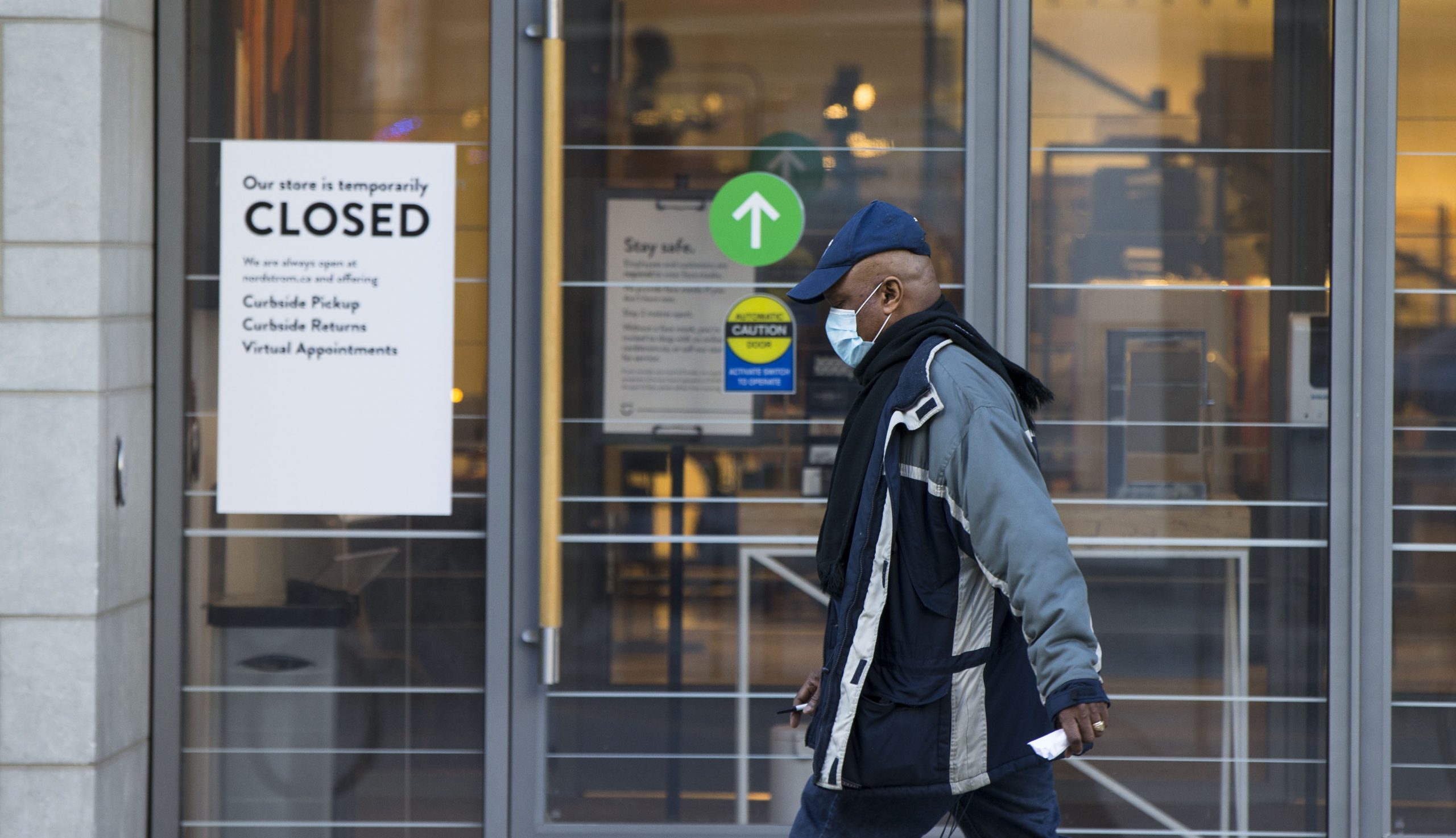
As Ontario attempts to ramp up its vaccination efforts, the Ontario Hospital Association (OHA) says the province is now in a third wave of the COVID-19 pandemic.
The association said on Twitter that new data from Ontario’s COVID-19 science advisory table shows variants of concern (VOC) are steeply rising in the province and the number of patients in ICUs is also trending upward.
The OHA says strong adherence to public health measures is urgently needed to prevent hospitals from being overwhelmed in the third wave.
As of Monday, the science table estimates Ontario is averaging around 733 variant of concern cases a day which is 49 per cent of total cases.

The effective reproduction number — R(t) — indicated to the average number of additional infections caused by one infected person. An R(t) of greater than one indicates exponential growth.
The table says the R(t) for VOC cases is 1.41.
In the province’s most recent round of COVID-19 modelling, the group said that while the drive to vaccinate residents and workers in long-term care has paid off with declining deaths and illness, progress against the virus has stalled outside that sector.
The key to controlling this, Dr. Adalsteinn Brown says, is ramping up vaccination efforts and focusing on regions hardest-hit by the virus and its strains.
The data shows that declines in community cases and test positivity have levelled off and cases are increasing in most Public Health Units, with average weekly cases soaring in regions where variants are most prevalent, such as Thunder Bay and Toronto.
Over the past two weeks, Ontario has seen cases grow by an average of 1.19 per cent per day.
“We’re nearing the finish line, but we’re not there yet,” said Toronto Chief Medical Officer of Health Dr. Eileen de Villa on Monday.

De Villa spoke about drastic rises in COVID-19 variants in Europe, and the subsequent responses of European countries to a third wave. However she said it too soon to say if Toronto is into a third wave.
She also said the problem can be controlled with the same health and safety measures we already know work: physical distancing, staying home, wearing a mask and good hygiene.
Cell phone analytics, however, show that many Torontonians are not staying home.
“None of us wants to continue to live in a state of suspended animation. This has been a significant burden on all of us,” said de Villa.
Recent data also suggests that the Ford government’s decision to loosen public health restrictions in late February, coupled with the spread of the B.1.1.7 variant first discovered in the UK, is like responsible for an end in improved numbers.
De Villa says it’s also too soon to talk about the possibility of another lockdown in Toronto.
Ontario’s Chief Medical Officer of Health, Dr. David Williams, also says it is “to be determined” whether or not the province finds itself in a third wave of the pandemic.
Williams adds it’s hard to tell where the current trend is heading until the wave or spike is over.
“One of the people on our team says you can always tell you’re [in a third] wave when it’s over,” said Williams.
“We could be into that base of a third wave. What does that mean? How big it is? That is to be determined.”

The National Advisory Committee on Immunization (NACI) is set to change its guidelines for the use of the Oxford-AstraZeneca vaccine and will recommend it be given to those 65 years and older, a government source confirmed.
WATCH: https://toronto.citynews.ca/2021/03/15/astrazeneca-vaccine-approval-over-65/
Earlier this month, NACI stopped short of recommending the adenoviral vector vaccine for those 65 and over “due to limited information on the efficacy of this vaccine in this age group at this time.”
In clinical trials, the AstraZeneca shot has proven to be 62 per cent effective in those between the ages of 18 and 64.
When Health Canada approved the vaccine, the agency stated that while clinical trial data was limited for people over the age of 65, blood tests showed seniors did produce COVID-19 antibodies from the vaccine. Also “real world evidence and post-market experience” in places the vaccine is already in use show “a potential benefit and no safety concerns” with giving the vaccine to seniors.
NACI reportedly plans to update its guidelines on Tuesday.
The safety of the AstraZeneca COVID-19 vaccine came under scrutiny last week following reports out of Europe that some recipients developed blood clots following inoculation. Over a dozen countries have paused use of the vaccine pending further investigation.
Health Canada said on Friday that none of the Oxford-AstraZeneca vaccine batches under investigation in Europe have been shipped to the country. Canada’s doses are coming from the Serum Institute of India, while Europe is getting its doses from facilities there.
The agency added that no adverse events related to the AstraZeneca vaccine have been reported in Canada to date.
Meanwhile, provinces across the country have begun vaccinating those between the ages to 60 to 64 with the vaccine.
In Ontario, 160 Shoppers Drug Mart and Loblaw pharmacies in Toronto, Windsor-Essex and Kingston have vaccinated more than 28,000 Ontarians to date.
The changing guidelines come as fears of a third wave of the pandemic are escalating in the country’s hot zones.
On Monday, the Ontario Hospital Association (OHA) said the province was now experiencing a third wave, with new data showing variants of concern (VOC) are steeply rising and the number of patients in ICUs is also trending upward.
Toronto’s Medical Officer of Health, Dr. Eileen de Villa and Ontario’s Chief Medical Officer of Health, Dr. David Williams both said it is too early to tell whether the city or the province are seeing a third wave just yet.
With files from The Canadian Press
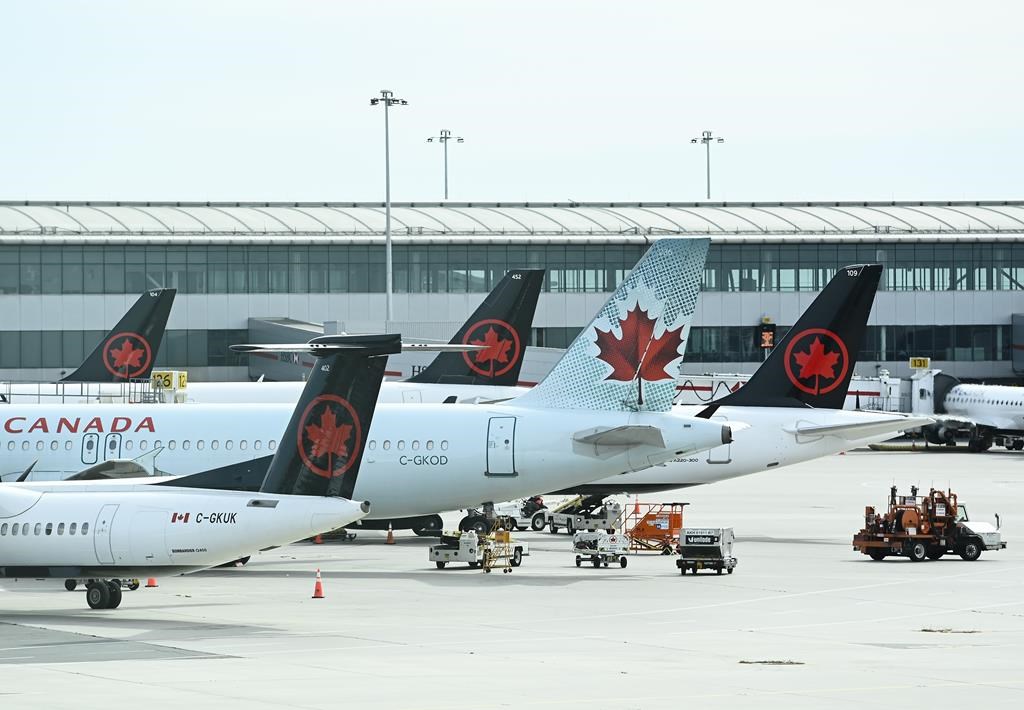
The fever struck Gary Lyon days after he and his wife, Sue, reached their Toronto home early last April, ending what was to have been their 40th wedding anniversary dream vacation.
They were passengers on Coral Princess, one of dozens of cruise ships cast adrift as the COVID-19 pandemic caught fire one year ago. After being rejected at several ports across South America, their ship found its final refuge in Miami, setting off a frenzied set of flights home — through Columbus, Ohio and Newark, N.J.
The Lyons witnessed a chaotic “gong show” of departures in the U.S., especially in Columbus where masked passengers mixed with unmasked drivers waiting on the tarmac at the bottom of the plane’s staircase.
When they arrived in Toronto, the Lyons were impressed by the steps taken to guard against the virus. The plane landed in a remote terminal and its passengers met masked border officials who were efficient.
But they wonder to this day about their taxi driver who declined their offer of a mask.
“We took all the precautions that people had asked us to do, like masks and gloves and luggage that was sprayed and all that stuff. But when I got home — when we got home — what kicked in was fever, body ache, loss of taste and smell,” Gary recalled.
So began a new, challenging health journey for the Lyons, two of the 62,580 Canadian travellers who were brought home from 109 countries as the federal government staged the largest, most elaborate repatriation of stranded Canadians outside of a full-scale war.
They came home on 692 flights and from 36 cruise ships, in an effort that continued until early July last year, Global Affairs Canada said.
“There were a lot of people who were saying, ‘Help. Help me to get back to Canada, I need to get back to Canada.’ I think that it was one of one of our finer moments.” – Marc Garneau
Global Affairs headquarters transformed into a travel agency. The department’s emergency response centre, normally staffed by two dozen people, swelled to 600, swallowing up offices, the library and entire floors of the Lester B. Pearson Building in Ottawa.
When countries began locking down, imposing road closures and checkpoints, there were calls to foreign governments to negotiate landing rights and safe ground passage for desperate passengers.
“Everyone became a consular official, everyone became a travel agent,” recalled then-foreign affairs minister François-Philippe Champagne. “I remember texting my counterpart in Peru to open the airspace.”
After doing that, Champagne got another call. Peru had declared martial law just as an Air Canada flight had been booked to head there. So, Champagne and his officials scrambled again, and the jet was granted permission to land at a military base just outside Lima.
“The airlines responded beautifully. I’m talking mainly Air Canada, because they have the international reach,” said Foreign Affairs Minister Marc Garneau. Garneau was the transport minister last year.
“We worked with them as a government to organize a lot of these flights, which they did at cost. And so, I have nothing but admiration for how they did that.”
For some travellers, the trip home was quick and uneventful. But for many, the exercise was fraught with delays, costs, and concern they would get sick from COVID-19. A year later, there is anger when they see Canadians still travelling to sun destinations.
Spencer Mason made it home from London last March, but it was a tough decision to leave behind a good IT job in a vibrant world capital. When he heard Prime Minister Justin Trudeau’s televised call for Canadians to come home as the pandemic was declared, Mason bought a plane ticket before the big rush hit.
“I wasn’t just temporarily visiting the U.K., but rather a full-time employee, which made the decision a bit harder,” said Mason, 23, who is now attending the London School of Economics and Political Science remotely from St. Catharines, Ont.
For other travellers, not everything went as smoothly. Some think the government could have done better, especially on the communications front.
Sanford Osler was among the final 94 to disembark the Coral Princess cruise ship in Miami after its South American voyage was disrupted by the pandemic.
The Canadians on board had formed close friendships, creating a Facebook page and an email list. They began sharing information because Osler said the official line coming out of Global Affairs just didn’t add up.
“That was my biggest concern about the Canadian government. They were following it, they had plans, but they weren’t communicating it generally through their normal channels to us.”
Passengers contacted their members of Parliament. Osler credits his Liberal MP, Terry Beech, with being “very useful because he got in touch with Global Affairs and sent me specific information that we weren’t getting.”
Catherine McLeod, a retired high school teacher from Ottawa who made a harrowing trip home last April from a stranded cruise ship, said the government should have done more, sooner, to slam Canada’s border shut to foreign travellers.
“And here we are with the variants now. Doesn’t make much sense to me. I think it’s ridiculous that they kept allowing people to fly in and fly out.”
But McLeod gives the government high marks for negotiating the passage of the cruise ship she and her husband, Paul, were on — the Zaandam — through the Panama Canal in late March.
Dozens of passengers had developed flu-like symptoms and the ship had been essentially stranded at sea after setting off from Chile in mid-March. It was granted passage through the channel on condition that all passengers stay on board.
“That was the government that pushed that. We snuck through in the dead of night with no lights on or anything,” said McLeod. The ship made port in Florida by the end of March, enabling McLeod and others to fly home.
McLeod and her husband are staying put these days. They managed to stay healthy, but others they knew from the ship got sick.
The experience has marked her forever, she said. She has no patience for people who chose to travel now.
“I think you’d have to be out of your mind,” said McLeod.
Gary Lyon agrees. He’s since beat COVID-19. His wife, Sue, was never tested but had all the symptoms and likely had it too. Today, they both feel a little more sluggish, less vibrant, and they have a hard time wondering whether it’s just a bad day, or something else. They’re reading a lot about so-called “long-haulers” in search of clues.
“You might dodge the bullet, but then you might not. I don’t know how people would justify most leisure travel in that scenario,” he said.
During the height of the airlift last spring, Champagne said he wondered whether “there’ll be light at the end of the tunnel” as hundreds of pleas for help piled up on his phone.
The government has now cracked down on travellers, imposing steep fees for quarantine hotels, and Canadian airlines suspending flights to some spots. Champagne wonders why anyone would want to travel for leisure.
“Why would anyone want to take the risk?” he said.
Global Affairs said the financial cost of the effort to get Canadians home is still being calculated.
Garneau said the great repatriation of 2020 was a remarkable achievement that fulfilled a duty to help Canadians who needed rescuing in extreme circumstances.
“There were a lot of people who were saying, ‘Help. Help me to get back to Canada, I need to get back to Canada.’
“I think that it was one of one of our finer moments.”
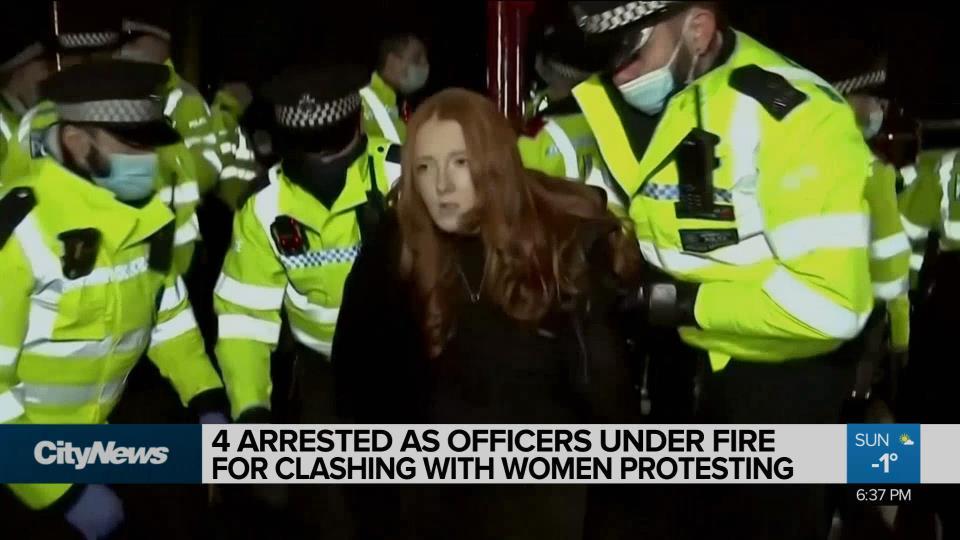
London’s police commissioner on Sunday defended her officers’ actions and said she didn’t intend to resign, after coming under heavy criticism for the way police treated some protesters during a vigil for a woman whom one of the force’s own officers is accused of murdering.
WATCH: https://toronto.citynews.ca/2021/03/14/london-police-under-pressure-over-clashes-at-womens-protest/
Hundreds defied coronavirus restrictions Saturday to protest violence against women and remember Sarah Everard, a 33-year-old London resident whose disappearance and killing prompted a national outcry. But the vigil ended with clashes between police and those attending, and many questioned whether the police force was too heavy-handed.
Home Secretary Priti Patel said scenes from the vigil in south London were “upsetting.” The capital’s mayor, Sadiq Khan, said the police response was “at times neither appropriate nor proportionate.” Both said they were not satisfied with the force’s report of events and were seeking a full and independent investigation.
Police were seen scuffling with some women at the event, and one woman was seen pinned to the ground by two officers. Video widely shared on social media showed a woman was pulled up from the ground by officers who then shoved her from the back. Several women were led away in handcuffs as other attendees chanted “Shame on you” at police. The force later said four people were arrested for violating public order and coronavirus regulations.
On Sunday, Metropolitan Police Commissioner Cressida Dick, who is the first woman to head the force, said she was personally appalled by the attack on Everard and she was more determined than ever to lead the organization. She said she fully understood the strength of feeling in response to Everard’s case, but stressed that Saturday’s vigil was an unlawful gathering and officers had been put in a “very difficult position” trying to police a protest during a pandemic.
She said that as big crowds gathered, officers needed to act to counter the considerable risk to people’s health. She added that she welcomed a review into her force’s operations.

Many of those attending the vigil were already wary of police because a serving Metropolitan Police officer, Wayne Couzens, was charged with the kidnap and murder of Everard, who vanished March 3 while walking home in London. Her body was found a week later.
The case has sparked a heated debate on women’s safety in the public space. Organizers had planned an official vigil at Clapham Common, a park near where Everard was last seen alive, but were forced to cancel the event because of COVID-19 restrictions. A huge crowd turned up Saturday nonetheless.
Khan, London’s mayor, said Sunday the police force had assured him the vigil would be “policed sensitively” but that this wasn’t the case.
Jamie Klingler, who organized the cancelled “Reclaim These Streets” event, blamed police for denying women their right to have a silent vigil in the first place. The force got the angry reaction Saturday because they refused to facilitate a peaceful rally, she alleged.
“I think we were shocked and really, really sad and to see videos of policemen handling women at a vigil about violence against women by men … I think it was painful and pretty triggering to see,” Klingler said Sunday.
Patsy Stevenson, who was pictured pinned to the ground by two officers during Saturday’s clashes, said she was considering whether to challenge the 200-pound ($278) fine she received.
“We were there to remember Sarah, we all felt deeply saddened and still do that it happened, so I brought a candle with me but unfortunately wasn’t even able to light it to put it down because the police turned up and barged their way through,” she told LBC radio.
Emotions were still running high Sunday, as several hundred demonstrators gathered outside London police headquarters. The crowds, which were peaceful, then marched to Parliament and laid down on the ground for a minute of silence to remember Everard.
Couzens, 48, appeared in court Saturday for the first time. He was remanded in custody and has another appearance scheduled Tuesday at London’s Central Criminal Court.
The Metropolitan Police has said it is “deeply disturbing” that one of its own is a suspect in the case. The force said Couzens joined its ranks in 2018 and most recently served in the parliamentary and diplomatic protection command, an armed unit responsible for guarding embassies in the capital and Parliament.
Everard, a marketing executive, was last seen walking home from a friend’s apartment in south London at about 10:30 p.m. on March 3. Her body was found hidden in an area of woodland in Kent, more than 50 miles southeast of London, on Wednesday. A post-mortem examination was underway, police said Friday.









